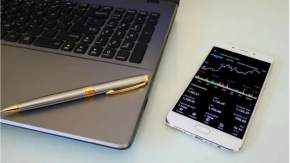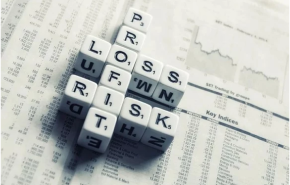Pros & Cons of Automated Trading Systems – All You Need to Know
- Forex Trading
Introduction
What could be simpler than an automated trading system? Just program a computer to buy or sell stocks, shares, and foreign exchange when certain criteria are met, and away you go. You can set the system up to sell when a share falls below a certain price or to buy euros when the exchange rate reaches a predetermined level. Or, you can program the computer to take into account a far more sophisticated set of circumstances and market conditions. Whichever approach you take, all you have to do is to sit back and watch your money grow. That’s how it works, right?
If only things were that easy! Whilst it’s definitely possible to make serious money with automated trading systems, there are also a number of potential pitfalls and challenges, especially for newcomers. So read on to learn more about the benefits and possible risks of automated trading.
The Pros of Automated Trading
Probably the biggest advantage of an automated system is that it takes the emotion out of trading. A trader may get carried away in the excitement of a deal and go too far, or conversely panic and offload stocks too quickly. Automated trading literally takes a more logical approach.

Another major advantage of automated trading is the use of a concept called “backtesting”, where historical data is used to predict what will happen in the future. Because of the extensive resources needed to track vast amounts of stock market data, backtesting used to be the preserve of a few large institutions, but in recent times, it’s become more widespread.
We human beings need to eat, rest, and sleep, and there’s a limit to how much information we can process and store. Automated trading systems, on the other hand, have no such limitations. They work 24 hours a day, seven days a week. They can cover a boundless number of markets, and are able to respond immediately to any new developments, regardless of the time or day of the week.
Convenient, efficient, speedy, accessible, non-stop, cost-effective, and with comprehensive market coverage, there’s much to commend automated trading systems.

The Cons of Automated Trading Systems
Any computer system is only as good as the information and data you put into it. So if you’re using automated trading, you need to make sure your strategies are the best. In fact, this area is probably the biggest downside of trading in this way. If you don’t have automated trading strategies that work, you risk losing your money, or, just as bad, missing out on potential profits.
There are other issues too. Something as simple as a power cut or a broken or slow internet connection is enough to make an automated trading system fail. Just like humans, such systems aren’t infallible: they require constant monitoring to ensure that nothing is amiss.
Automated trading systems are also complicated to design. If the underlying algorithms are incorrectly calibrated, or if certain fundamental market conditions change, there’s a chance that the system may become compromised, and actually do the opposite of what it was intended to do.
Finally, automated trading systems are rightly lauded because they take the emotion out of buying and selling, but that can be a double-edged sword. Many fortunes have been made by traders following a hunch, trusting their gut instinct, and making an inspired decision. With an automated system, such an approach isn’t possible.
The Cons of Automated Trading Systems
As with all financial transactions, you need to be aware that there are several scams associated with automated trading systems. Some scammers charge you a subscription fee for access to great trading tips which are anything but. Watch out for phony investment companies that take your money then disappear overnight, or that empty your account after one or two trades and blame it on the markets. Other seemingly genuine brokers make it difficult or virtually impossible for you to withdraw your funds.
The good news is that with a little common sense, it’s easy enough to spot most of the scammers. Make sure that any company you work with is fully regulated and licensed. Don’t be taken in by 100% risk-free guarantees and the promise of huge returns. Always read the small print, and look for proof of the company’s trading record. Read the online reviews and double-check that the company has a physical presence and staff who are listed on social media sites like LinkedIn. And be very careful about what personal information you share.
Once you’ve decided that automatic trading is for you, it’s vital that you fully understand what you’re getting into. Do your research: it can be a profitable way of making money, but it’s definitely not for everyone, especially if you have a limited understanding of how stock markets and forex operate.
Automated trading systems typically work by connecting a software platform to a direct access broker. That means that your choice of broker is especially important. Before you sign up with anyone, ask for the answers to these questions:
- Can you provide evidence of your track record?
- How much do you charge, and how – flat rate, commission, sliding scale?
- What markets do you cover?
- Can I personalize my own settings for risks and returns?
- Is the system set up for short term or long term gains?
- How easy is it for me to withdraw funds?
Don’t be afraid to ask questions, especially if you’re new to the game. A genuine broker will be happy to help you. And remember that if you’re unlucky enough to fall victim to a forex fraud or trading scam, there are expert companies out there who may be able to help you get your money back.
Conclusion
There’s no doubt that automated trading should have a place in the portfolio of every serious investor. However, it’s crucial that you understand the markets in general before you jump in, and also that you continuously monitor and maintain your system.